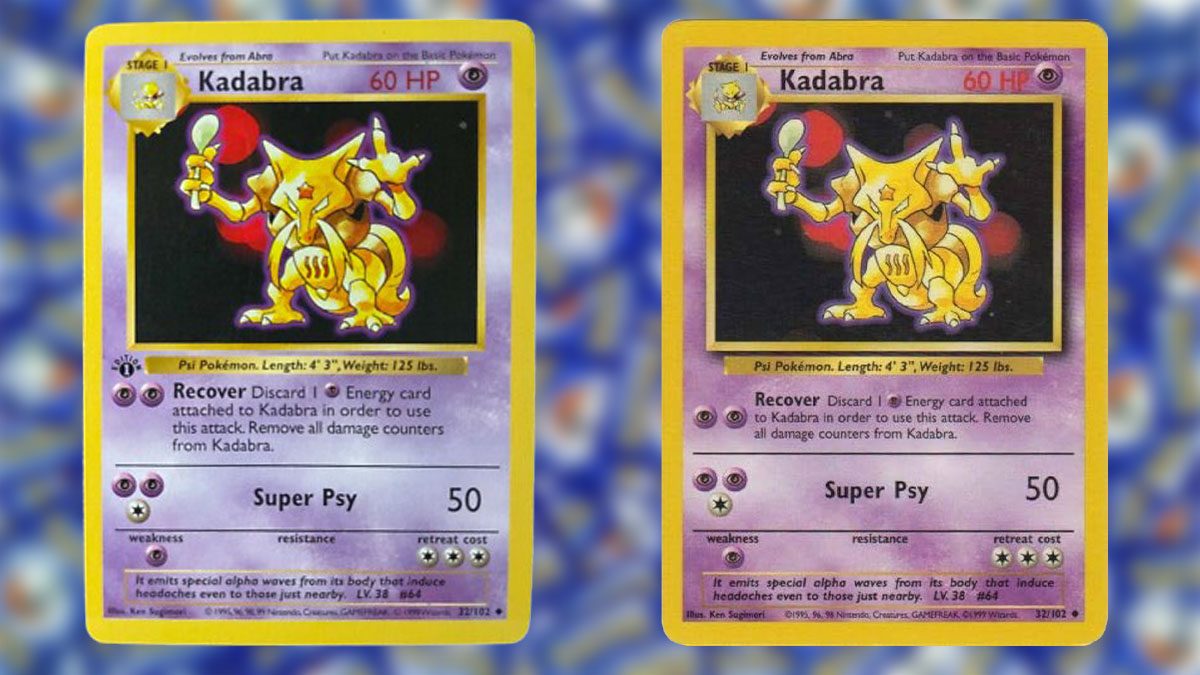In the vast world of Pokémon card collecting, ardent enthusiasts have long been drawn not only to what creatures are emblazoned upon their plastic treasures but also to the nuanced permutations that make one card more valuable or collectible than another. Among these distinctions, the debate between shadowless and shadowed Base Set cards sits at the heart of the hobby, an intriguing dance of visual clues that spell the difference in rarity and value.
To the untrained eye of a passerby, a Pikachu might look like any other Pikachu, but the truth lies in the details. Released in the whimsical year of 1999, which was as much about boy bands and oversized tech as it was about capturing the elusive Pokémon, the Base Set cards became the flagship of a brand-new cultural phenomenon. But within this launch were subtle shifts, a trifecta of card types—First Edition, Shadowless, and Unlimited—that collectors still debate today.
To the astute collector, shadowless cards were the first evolutionary step beyond the vaunted First Edition batch, shaking off that infamous black stamp while maintaining the minimalist artistic flair. When displayed, these shadowless frames looked as if the Pokémon themselves could leap right out of the card, unanchored by a shadow that might hint at something more grounded or pedestrian.
Yet, like any good sequel to a blockbuster, the real twist came when Unlimited hit the shelves. Before children across the world could even shout “I choose you!” with their stacks, these new prints boasted a shadow facade, creating a visual illusion of depth around the Pokémon’s portrait that set them apart in both appearance and sentiment.
The timeline was straightforward enough: the First Edition was the first hatchling of the Base Set nest with its distinct stamp, followed by the sleek, unbranded shadowless model, and ultimately crescendoed with the wide-release Unlimited variant that presented the shadow behind the frame—subtle, and oh so clever.
Such minuscule touches mean everything to collectors, transforming a simple children’s game into an intricately woven tapestry of artistic and historical intrigue. Shadowless cards, residing in the middle ground of scarcity, view themselves as the middle child—the Jan Brady of the Pokémon card family—often more desirable than the shadowed counterparts due to their relatively low supply yet not as venerated or chased as their older sibling, the First Edition.
One need only glance ever so carefully to see the signs. The flat frame and almost architectural absence of shadow, the slender ‘HP’ drawn in the kind of vermilion script that speaks of understated elegance, all make a shadowless card the belle of the Pokémon ball. Then you notice the brighter border of yellow that seems more sunlit, more optimistic, compared to its rich shadowed cousin.
Even the typography yields secrets, betraying finer, thinner lines in a diligent attempt to hold on to a whisper of space in the card’s text boxes before Unlimited wades in like a bodybuilder with broader shoulders.
But the games don’t end there. Beneath these card differentiations, a deeper layer of detective work beckons, hidden in the holo pattern. The shadowed Unlimited sometimes displays a more lustrous finish, flaunting fuller colors. In contrast, shadowless hints at a sensual flatness, a different kind of visual treat for card connoisseurs delving beyond the ordinary.
While some collectors make it a point of pride to have a near-complete understanding of all these nuances, others find joy in simpler pursuits, like ensuring that their humble binder respects the majesty of the genre. It’s a world where box art and seal styles make other differences, crafting a trail of breadcrumbs for those willing to chase every clue down the rabbit hole.
Of course, the practical collector needs no more than a fast, go-to checklist. Picture in hand, if a card looks like it is missing a gray shadow, a thinner ‘HP’ beckons from the corner, and a lighter border knocks quietly at the corner of your mind, you’ve got a shadowless treasure seeking your attention. The familiar friends of First Edition, shadowless, and Unlimited must be carefully placed on their respective thrones, despite the competing siren calls of crowner glory in centering, edges, and surfaces.
Every Charizard, however, watches with a gleam that speaks of storied history, every Blastoise and Venusaur rumbling with memories of the deck guardians they’ve always been. As the cards shuffle their dreamy possibilities, there’s a palpable sense of nostalgia, to reread childhood lore through a collector’s learned lens. Each card, whether shadowless, shadowed, or otherwise, tells a story uniquely its own, crafting an ÜBER checklist of everything wondrous about this pocket-sized polyglot of collectible charm.

